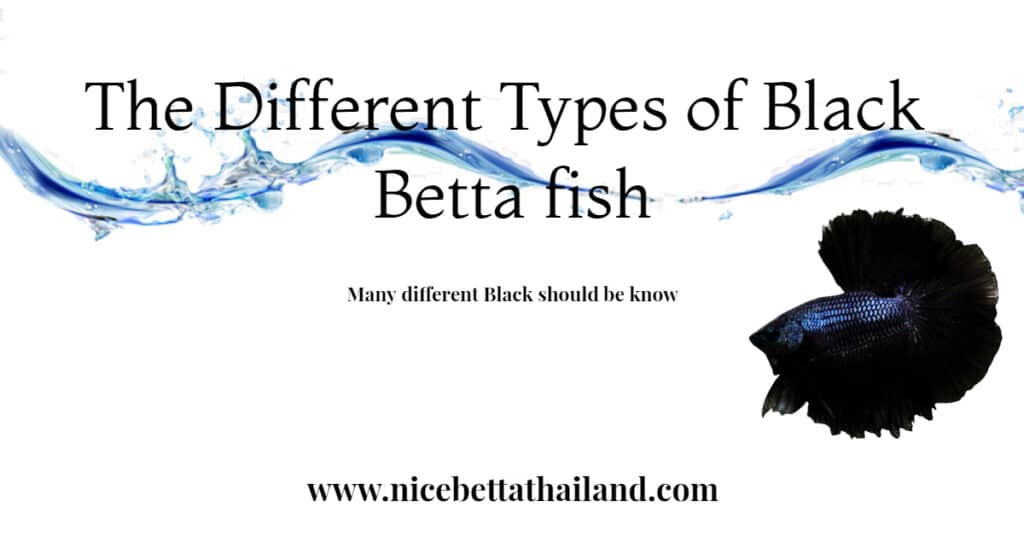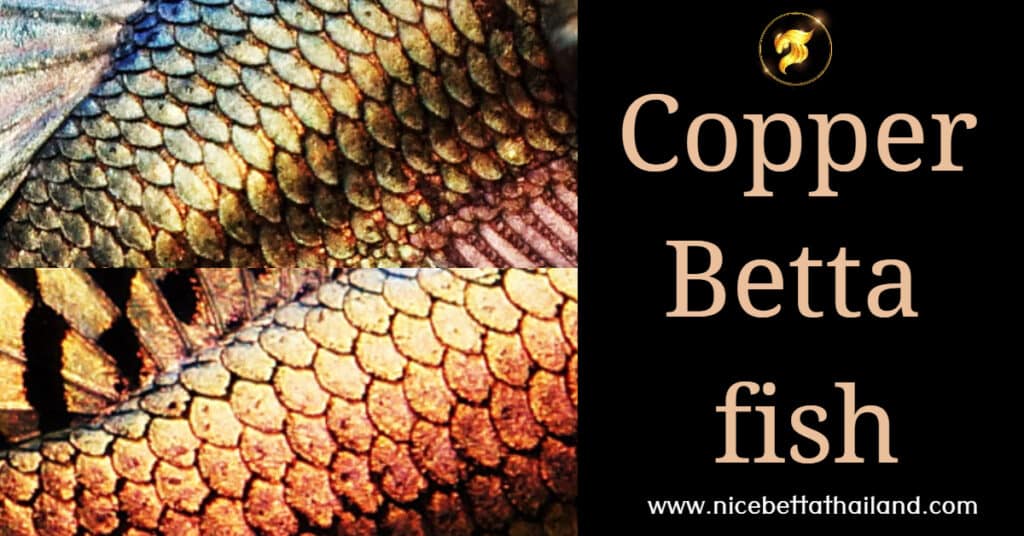One of the most confusing issues for newcomers into our hobby is the different types of black betta fish, and how they work from a genetics perspective. The further confound matters, when they ask the questions of more seasoned breeders, they information is they receive is often disjointed and misleading. Unless a particular breeder is working with the type of black in question, he or she may not have a clue as to what it is or how it behaves genetically, and therein lies the problem.
Types of Black Betta fish
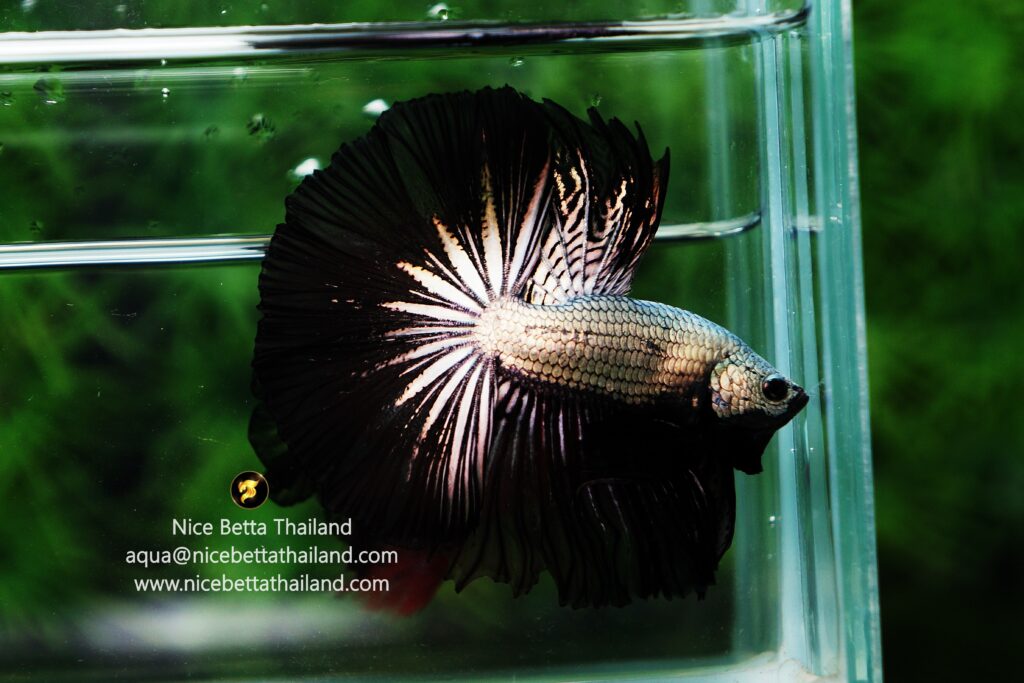
In wild type bettas black is a color that is often covered by other colors. The distribution of black pigment is all over the fish except for most of the caudal fin and the abdomenal area. This dispersion is of medium density but is not usually obvious because of other overlaying colors.
There are currently several different types of Black bettas available today, but if we cut out using the various strain names of many different breeders, we are left with the most popular:
- Black Melano
- Black Lace
- Black Orchid, Black Devil, Black Ice
- Copper based black (newest trend)
- Black Galaxy
- Super Black
- Black Star (newest trend)
Black Melano
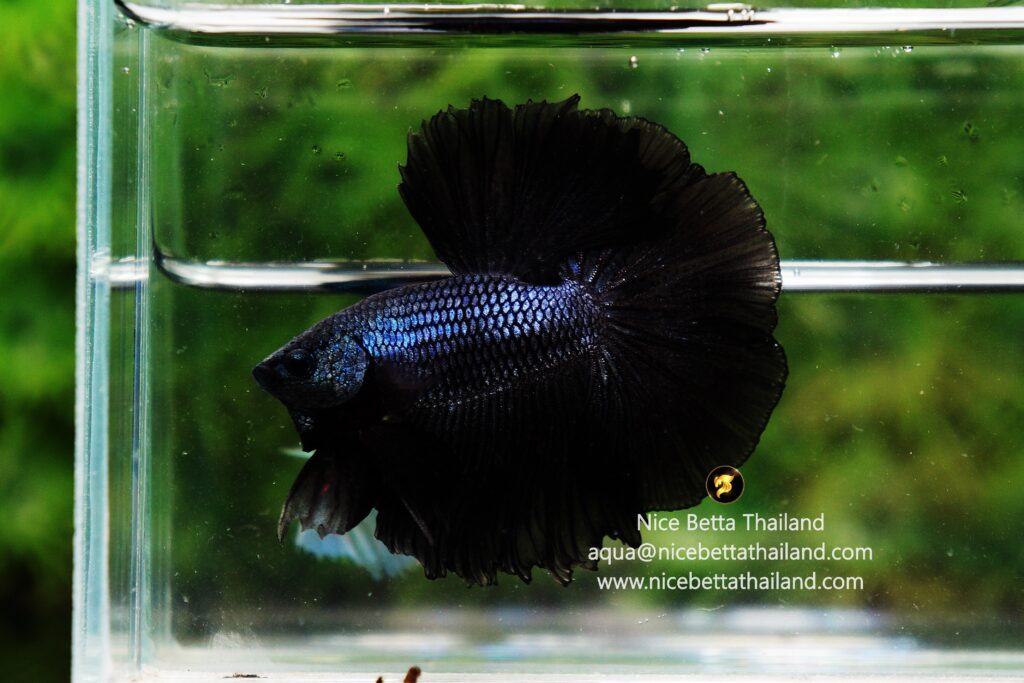
This is the most popular type of black in bettas. In melano betta fish, a mutant gene has caused the black pigment to be greatly increased in density and coverage area. The mutated gene that causes increased black color is recessive to the normal black gene. This means that if a melano betta were spawned to a normal betta that does not have the mutated black gene all of the offspring would be multicolored. These offspring would be carrying the gene for melanism, but it would not show in their coloration. These are called ‘melano genos’ and they are indistinguishable from normal multicolored bettas. Recessive characteristics only become visible if both parents pass down the mutant gene to their offspring. Melano females can not be used for breeding purposes, and therefore the color has to be perpetuated using females of other colors that carry the mutant gene for melano, usually iridescent (royal, steel, green) colors. Unfortunately, these crosses inevitably introduce iridescence into the body and fins of the melano fish, which is considered a fault by IBC standards.
The melanophores from melanos grow very differently from that seen in black lace and wild type. They pile up and are very sticky, which is why they produce such a dense black. If you were to look closely at a melano, you would notice that they have a lot of speckling throughout their fins that that make them look so dark. These are ‘balls’ of melanophores. Preliminary studies have shown that these melanophores have extra adhesion proteins. One hypothesis is that these proteins are also responsible for female infertility. Melano females will produce eggs during the act of spawning like a normal female, but something happens during the hatching process that causes the fertilized egg to rupture.
The appearance of the Melano black betta is a very dense, dark black (often approaching the ‘blue-black’ color of a raven). Spawning a melano male to a melano-carrying iridescent female (blue, green, or steel) will produce 50% black melano and 50% iridescent which carry the melano gene. Of these numbers, only 25% of the black melano offspring can be used for breeding, since it’s been established that black melano females are incapable of producing viable young.
Black Lace
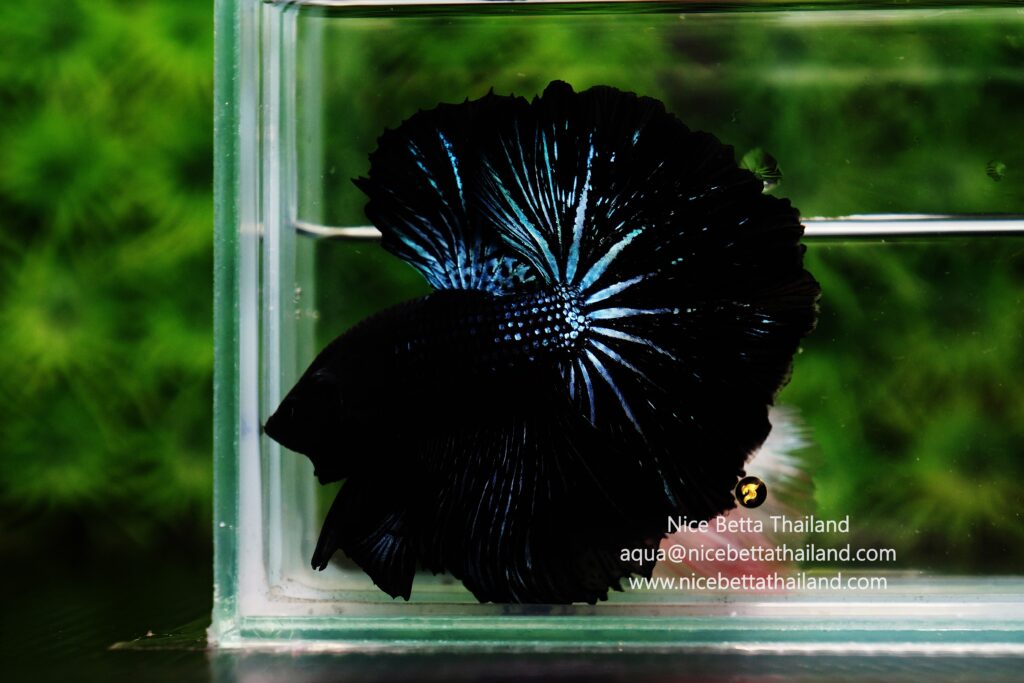
The ‘Black Lace’ betta is a dark colored fish that rarely approaches the depth and intensity of the melano black. Most Black Lace fish display too much iridescence in body and fins to be competitive in the Black class, and are instead relegated to Dark Bicolor. The ends of the fins of Black Lace fish should be clear or cellophane in color, causing the ‘lacy’ look that gave this type of black its name. Amateur hobbyists in particular need to be careful not to confuse Black Lace with Melano Butterfly, the fins of which can also fade to clear or smoke. Unlike the Black Lace, the Melano Butterfly will still maintain a very dark black or blue-black body color, and are still genetically melanos.
It has been claimed that the Black Lace originated from the Orient from non-red stock, and perhaps there once was a pure strain. The ones that are prevalent today generally come out of marble strains and like all other marble based blacks they can be difficult to accurately predict.
Like melano, fertile black are recessive to normal dark color; however unlike melano, the females of Black Lace are fertile. Crossing between Black Lace and Melano do not give 100% blacks in the first few generations since the genes controlling the black appearance of these strains are on different sets of alleles. Very recently, top breeder and exhibitor Connie Emery has been working crosses of Black Lace and Melano black and producing what she calls ‘Double Black’ – a more intense black with fertile females siamese fighting fish.
Black Orchid, Black Devil, Black Ice
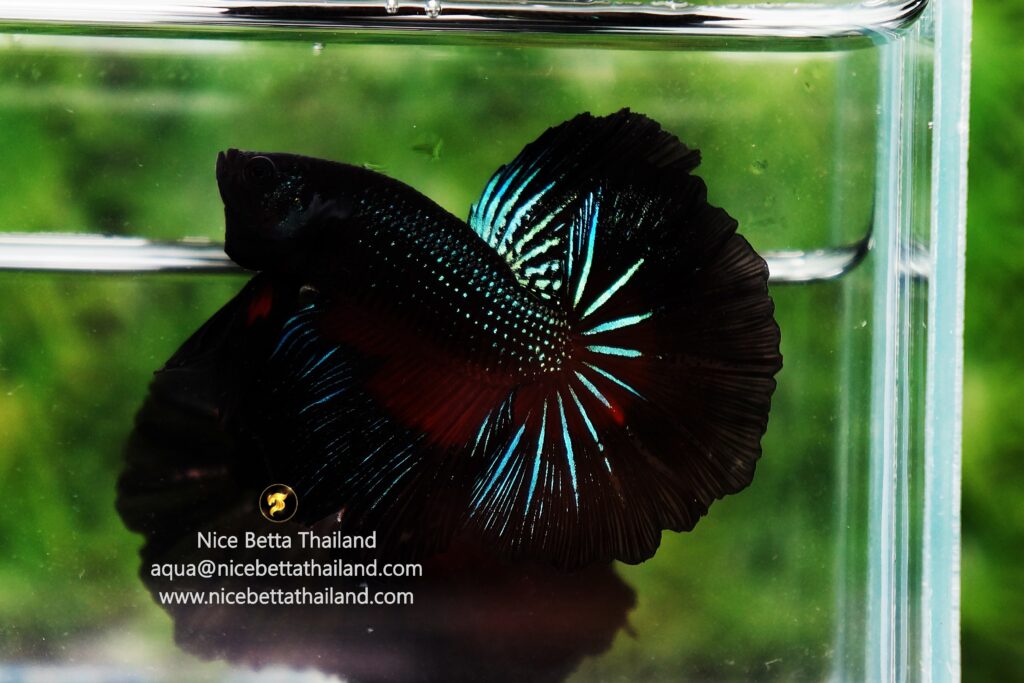
Henry Yin first coined the name Black Orchid to describe his particular development of dark bicolor Crowntail, which was (so I’ve been told) NOT a marble-based black but a melano type with excessive steel iridescence, particularly in the fins. The name has since been applied to any fish of similar coloration in a multitude of forms, from HM to Plakat, but these almost always come from marble. Essentially, the Black Orchid betta is a dark black color with streaks of steel blue in the fins, often forming almost a butterfly pattern. The iridescence is not always limited to the fins, and many Black Orchids also develop red wash (another indicator of the marble gene messing with this line). Increasing the red wash has given a new type of ‘black’ – the so-called ‘Black Devil’, which is a marble type black with red in the fins instead of iridescence. They do not breed true, and the production of the Black Devil betta seems to be very much the luck of the draw. The Black Ice betta is also derived from marble, and can appear randomly in marble spawns. It is a black fish which varies in intensity and possesses generous iridescence in the body and the fins. The iridescence in the Black Ice fish can be either steel, royal, or green. Selective breeding has increased the percentage of Black Ice offspring from Black Ice pairings, but it still does not breed true.
Copper Based Black
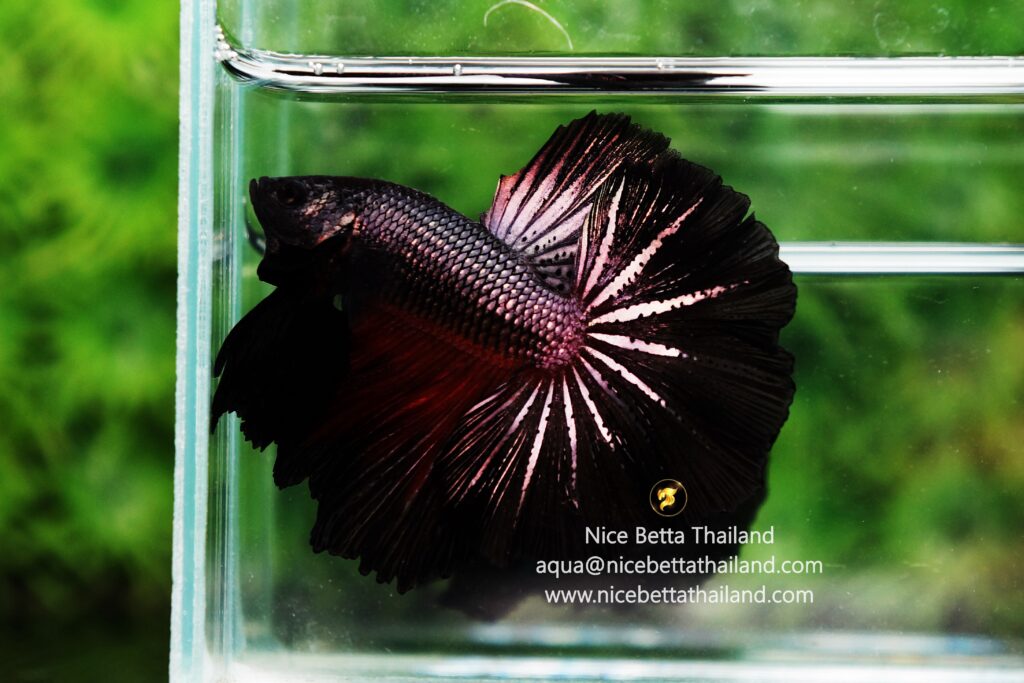
With the advent of the copper types, it became popular to cross the solid coppers onto every conceivable regulated betta color imaginable, including melano. The first copper/gold female I was able to acquire (in 2003) was bred to a melano HM male from Bonnie McKinley lines, and produced 100% metallic green. Subsequent generations saw the return of the melano color, with some modifications: while most of the blacks from this line had heavy coppery iridescence, they were curiously free from most blue or steel iridescence normally seen (and faulted) on melano bettas. Selective breeding increased the intensity of the black color while keeping the line relatively free from blue or steel, and eventually produced black females which had enough coppery iridescence to be fertile. Although many fish from copper melano lines have too much copper to be considered ideal for IBC showing purposes, there are still individuals who exhibit a perfect solid ‘mollie’ black color without a trace of metallic or blue iridescence. It remains to be seen how enterprising breeders can isolate these ideals and begin producing solid black bettas from metallic lines that are consistently competing at top levels. (Photo: Copper based black from Wasan Sattayupun )
So there you are, Black Betta Lovers! Pick your favorite black, roll up your sleeves, and get to work. The true solid black Halfmoon betta is still elusive enough to be intensely sought-after, and the different lines are sufficiently challenging to keep a breeder busy for many years. Let’s see who can produce the very best black!
Super Black
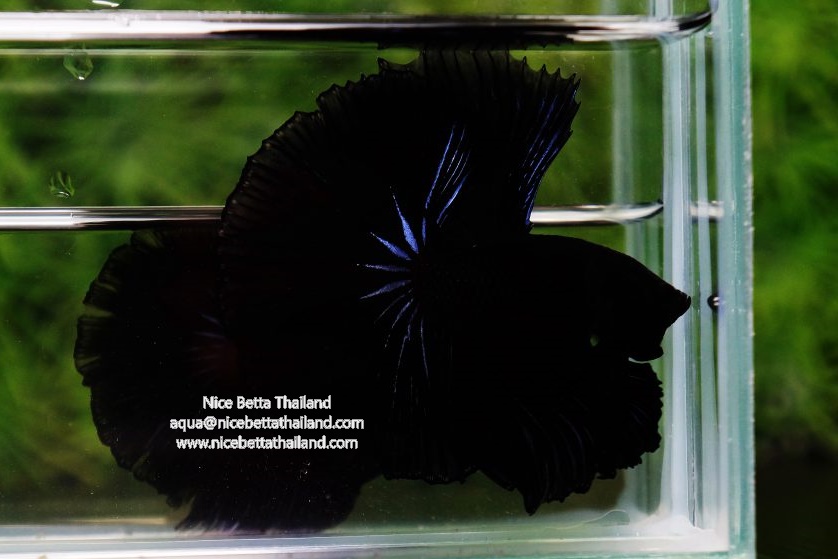
Super Black betta Is a different color type among the darkest fish species Because it is without scales on the body That makes the fish have a darker color than other types.
Classified as a color that is harder to breed than other black types
Breeders will know that Super Black That will be red And blue, often mixed with fins Therefore having to select fish in the next breeding more strictly than other types of black fish.
But if you succeed, the Super Black color category will have an advantage in the points of the contest more than other types of black as well. Since it’s pure black No scales or other colors mixed in.
That’s why the color Super Black is also more expensive than other colors because the needs of the competition are interested in the color. Super more black Black good than other Black categories
And can be classified as completely black, which is also rare
Shadow Black star (Rare color in 2023)
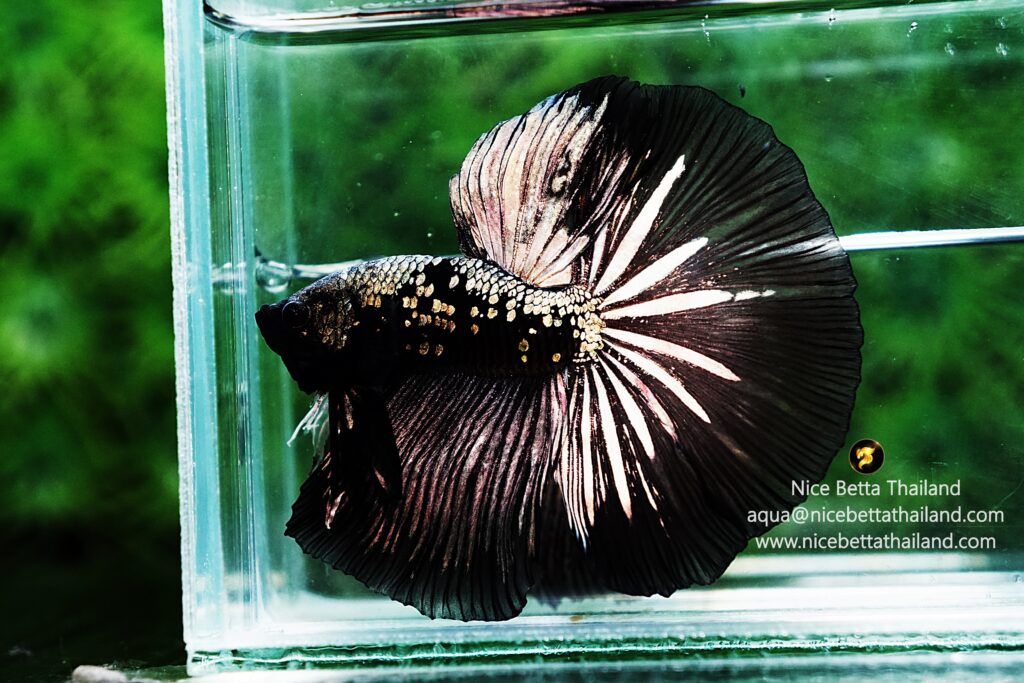
This is the new trend colors for half moon in 2022 still rare for this moment.
Shadow Black Star is one of the rare fighting fish that Nice Betta Thailand farm developed from the basis of Black copper fighting fish with peeling scales mixed with Black Samurai that we also developed. Currently, we are in the process of collecting all details of each model. Then we will summarize the information again.
Shadow Black Samurai longfin
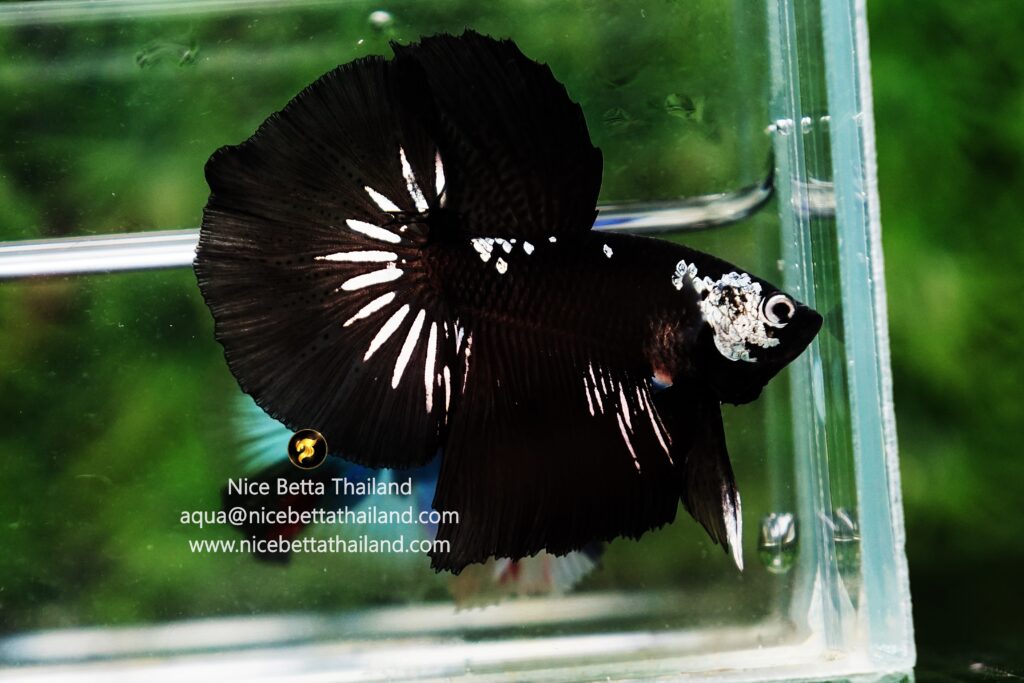
The black Samurai long fin betta fish is basically the same color as the general short-fin samurai. But it will be clearly seen that when the tail is long, it will be even more beautiful. The black is darker and there are shiny white scales in the style of a samurai on the body. And if the head area has a helmet, it is considered a high quality samurai betta fish.
Current example picture, the long-tailed samurai betta, is a very deep black color with shiny scales. Sold only at Nice Betta Thailand. We are the only one who originally developed the Samurai betta fish with a longer tail. Therefore, it is seen that the long-tailed samurai is still a rare color in the general market that only has short tails.
You can get to know more about the Samurai betta fish at : History of samurai betta fish
If our article was useful to you You can leaving a 5-star reviews for It’s an encouragement. For us make encourage us in our research. Research information about betta fish for to present useful information further

Also we have group talk about betta fish for sale and share any new tip take care information on Web3 socialFi group

Right now we have betta fish doctor help every bettas lover by top breeder in Thailand to cure or share more tip on Animalverse social
If your bettas fish sick or need tip to treat help or join event prize with AVC Token
Let’s join the group many top breeder will help to answers in betta fish community
More info :
All of Betta Fish A Guide on Patterns, Color in the world
The most expensive betta fish in the world.


